Redmond Roundup
The Office, Anywhere: 5 Office Suites Battle It Out in the Unified Communications Ring
As unified communications meets office-suite productivity, we take a look at five different suites and how they handle collaboration capabilities.
Anyone who's ever had the pleasure of opening an e-mail window from an instant messaging session understands the benefits of unified communication and collaboration (UCC). Within the last three years, UCC has gathered strength as a movement that could do just what its name promises: unite all forms of communication so that they all have the ability to interact with one another.
Whether it's a click-to-LiveMeeting feature on an IM client or the ability to place a Voice over IP (VoIP) call through your Microsoft Outlook Contacts list, UCC is the next generation of thinking as it relates to the crosspollination of software.
I know what you're probably thinking: This is supposed to be a story about office suites. What could that possibly have to do with communication or collaboration tools? Could you just stay on topic and tell me whether I should upgrade to Microsoft Office 2010 or switch to WordPerfect X5?
My point is that office suites are not that different from communication or collaboration suites. The only major difference is the latter's ability to perform a higher level of analysis at a higher level of reporting. Office suites share several characteristics with communication and collaboration tools, and would only benefit from a larger degree of collaboration.
Take Microsoft, for example. One day, you may even see Microsoft IM and LiveMeeting embedded on each program within the Microsoft Office Suite. How great would it be to be able to drag and drop a Word document you're working on, in real time, to your manager through an IM window and have your manager return it to you with edits, while you continue to work on it yourself? Or have a video chat session with several programmers who are running, testing and editing your Excel file in real time while you continue to build the final product, so that you don't have to continuously go back looking for bugs or errors?
OK, I'm getting carried away. Most of the office suites we look at here are in the infancy of collaborating with each other, and are nowhere near a full UCC solution. But in the spirit of progress, we evaluate five of the latest office suites with an eye toward tools that not only perform their functions well and are easy to use, but that also add something extra in the form of collaborative advancement.
An office suite traditionally includes a word processor, spreadsheet, database and e-mail client. For the purposes of this article, we'll be spending a little more time on the overall interaction each independent program has with one another, and with our benchmark tool, the dreaded Microsoft Office file extension.
Like it or not, Microsoft still owns the standard when it comes to office suites. Most enterprises use Office almost exclusively. Most homes also have one version or another of the Microsoft suites installed on a computer, making the need for other suites to play nice with Microsoft paramount.
OSes are also no exception. We're covering the office suites that are OS-independent when it comes to compatibility. For many years, Microsoft OSes were the standard, but today you need to at least offer a Mac or Linux flavor if you want to be in the race.
WordPerfect X5 Standard Edition
In many ways, Corel WordPerfect Office suite breaks my heart. It's so easy to use and so robust that I wish Corel Corp. could break Microsoft's hold on the enterprise so that we could use WordPerfect at work more often. Fortunately, Corel WordPerfect Office Professional suite is fully compatible with major file types and plays well with Microsoft, in particular, allowing me to use it at home or at work with minimal interference to my day-to-day work.
File format freedom is a big plus with Corel, particularly as it relates to being able to open and save documents in Office Open XML. This compatibility includes interoperability with Microsoft Office documents (.docx), spreadsheets (.xlsx) or presentations (.pptx).
Instead of offering a version of SharePoint, Corel offers the ability to manage content with direct access to SharePoint Server so that your team can write, review and access the same document from remote locations. And with the ability to track changes like a Microsoft file, you can quickly compare document versions and create edits in X5.
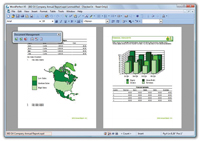
[Click on image for larger view.] |
| Figure 1. The Corel suite is so elegant that it's a shame the company lost the suite battle to Microsoft. |
A new tool, WordPerfect iFilter, lets you search content in WordPerfect documents that are stored in a Microsoft SharePoint server with Google Desktop or Windows Desktop Search, saving a lot of wasted time spent looking for small bits of data in old files.
Like Microsoft, WordPerfect Office X5 is focusing on how interoperability with the Web can improve workflow. Now you can access information directly from the Web, giving you the ability to create a document once and have it automatically update when you need to refresh or add new data. For example, you can now create a report with Internet data such as stock prices, and WordPerfect can automatically update those fields with the latest data.
WordPerfect Lightning is one of the coolest features in this roundup. It's a tool that centralizes the suites by providing you the option of viewing a document, opening your last document, taking a quick note, opening your last note, or taking a snapshot of a selected portion of your screen. I use this application constantly because the snapshot feature is the fastest way of sharing a portion of your screen. The alternative is doing a print screen and then cropping out and zooming into the area you want to share.
Another cool new addition to WordPerfect is PaperPort Professional 12 SE, which organizes all of your scanned documents and electronic files on your desktop. This feature also lets you search and view PDF files quickly, which is one capability I haven't seen in other office suites.
Unlike Microsoft, an upgrade from an older version of the suite to WordPerfect Office X5 is possible. And despite changes between X5 and older versions of WordPerfect, you can still import old templates, shortcuts and customized menus created in previous versions. Best of all, X5 is fully Windows 7-compatible, which is the OS used to evaluate the office suite.
However, because WordPerfect is so focused on providing a solid alternative to Microsoft that's as Microsoft-friendly as possible, Corel hasn't made the same advancements toward networked collaboration or cloud computing that Microsoft has.
Pros: Easy to use, robust capabilities, strong compatibility
Cons: No relevant weaknesses
EasyOffice Premium
Suppose you're on a techie version of "Survivor Man" and you need a fast, easy-to-use and cheap office suite to keep you safe until you're rescued by the program police. EasyOffice Premium is the tool you'd need to survive the ordeal. For anything else, it's not of much use, although at only $49, it's an inexpensive alternative to the real thing.
EasyOffice Premium features all the relevant components of a decent productivity suite at a fraction of the cost of Microsoft Office. The only catch is that you have to be willing to give up the luxury of a modern interface, because EasyOffice is essentially a mirror image of Microsoft Office 2003. The result of using such an outdated interface is similar to the feeling you get when you look at an old car that you really wanted to drive when you were a kid but, now, see that it looks clunky and outdated. That's how it feels using EasyOffice Premium.
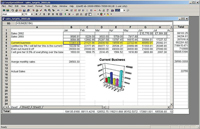
[Click on image for larger view.] |
| Figure 2. EasyOffice Premium is inexpensive but offers little more than basic functionality. |
One of the main problems I had with EasyOffice was reverting to the drop-down boxes associated with that old architecture. Remembering where all the features and functions are located was harder than I expected. UI testing has come such a long way that nowadays everything is a click or two away, and functionality is located on the interface in either a ribbon or a hot button.
But despite the outdated interface, the word processing, spreadsheet editing and presentation, e-mail manager and database manager are easy to use and work well, albeit with little to no cross-collaboration. You do, however, get a decent PDF creator and editor, as well as a run-of-the-mill antivirus suite for no extra cost.
With EasyOffice, a lot of the apps include only the bare-bone capabilities, and little to no bells or whistles. Therefore, I wouldn't feel too comfortable leaving my computer's protection up to the suite's antivirus program. Like everything else about EasyOffice, it feels a little too outdated to trust completely.
Buyer beware: If you go to easyofficepremium.com to purchase the software, no listing of any ownership or contact info is available aside from two links, one for support e-mail (which I never got a response from) and another, supposedly for billing inquiries, that leads to a Web page in Asia that has no western words and is full of YouTube videos. Like the software itself, these links left me scratching my head.
Pros: Inexpensive
Cons: Outdated, compatibility issues outside of Microsoft OS, unreliable features
OpenOffice 3.2
If you're looking for a robust office suite that's professional and lacks any kind of bells or whistles, look no further than OpenOffice 3.2. Priced at nothing -- free, zilch -- it's the best traditional office suite in this roundup.
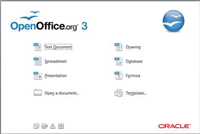
[Click on image for larger view.] |
| Figure 3. The price of OpenOffice 3.2 -- free -- is hard to beat. |
A quick download from openoffice.org will give you a clean and ridiculously easy-to-use set of tools, including a text editor (which is Linux speak for word processor), spreadsheet, presentation, database, drawing program and an advanced programming tool called Formula. Each one of these tools has a clean and intuitive set of features layered within a modern interface that gives Corel and Microsoft a run for their money.
The templates selection is decent, although a far cry from the type of snazzy glitter that you can expect from Corel or Microsoft. Unlike those suites, OpenOffice doesn't include an e-mail client, but that's easy to overlook because it's built to interoperate with Lotus Notes. This level and ease of collaboration is what we're looking for in this roundup and fits perfectly under a UCC platform.
Additionally, OpenOffice is the friendliest program here from the perspective of compatibility. Regardless of what file extensions we threw at this program, or which OSes we submerged it in, OpenOffice worked well and hard every time.
Pros: Free, easy to use, strong capabilities
Cons: No relevant flaws
Lotus Notes 8.5
OK, Lotus Notes isn't really a full office suite. In fact, it's more like a universal database that provides office suite-like capabilities such as e-mail and, now, compatibility with Microsoft Office 2007. But the new features and clean interface of Lotus Notes 8.5 merit some recognition. Older versions of Lotus Notes used to be enigmatic and hard to use, let alone understand. But new capabilities such as the ability to right-click documents in any view in order to see a more concise menu of options have made the software a lot more accessible. Now you can also right-click documents to mark them as read or unread, similar to what you see in Outlook with e-mails.
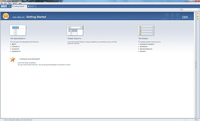
[Click on image for larger view.] |
| Figure 4. Lotus Notes 8.5 is more database than office suite. |
Improved image manipulation now automatically compresses images, such as bitmaps, that are pasted into documents, and automatically converts them to smaller .gif or .jpg formats. As in earlier versions, you can use red text to indicate unread documents, which provides an easy way to highlight the text in the data areas of Notes, such as the Inbox and messages.
Mail signatures imported from preferences will now be ignored by all Spell Check operations, and a new Spell Check preference lets you automatically correct common typing errors such as "teh" instead of "the." It will also auto-correct writers when they start a sentence with a lowercase letter or type two capital letters, such as "GOvernment."
IBM installed a well-built and intuitive toolbar with icons for oft-used editing options, such as a text-color icon, highlighter icon, insert-link icon and an underline icon. These changes are subtle but make a big impact on ease of use.
Along these same lines, IBM added new table-editing options, such as the ability to drag column or row margins to resize, drag the margins of the entire table to resize it, or drag the contents from one cell to another. You can also now insert a new row or column by holding down the Shift key and double-clicking the common border. Another feature that I missed in Lotus and took for granted in Microsoft Access is the ability to undo multiple errors.
On Lotus Notes 8.5, you can now drag and drop groups to the Notes name fields and rich text fields; drag names from external apps to the program's name fields; or even drag search results from desktop search to Notes documents. This saves a lot of time if you spend most of your days in Lotus. So, although it's not a full office suite, Lotus Notes 8.5 is improved enough in its latest version and has enough features similar to those of full office suites that we wanted to include it here. It should be noted that IBM has its own free office suite, Lotus Symphony 1.3.
Pros: Easy-to-use interface, interoperability with OpenOffice
Cons: Notes is not really a full office suite
Microsoft Office 2010 Professional Edition
As office suites go, Microsoft offers more than just a word processor, spreadsheet, presentation program and e-mail client database. There's also a large library of document, spreadsheet, database and presentation templates online.
More importantly, Microsoft Office Professional maintains an intuitive UI that makes it easy to use basic and common features and learn new tricks and capabilities. The new advancements in 2010 are a cloud capability with which you can view and edit Microsoft apps via your browser (for no extra charge) and a push toward collaboration by providing a real-time post-and-share feature with SharePoint 2010.
A good test of how easy an office suite is to use is to try to build a database with its database tool. We were impressed not only with the relative ease of building a database but, more importantly, with how easy Office 2010 makes it to coordinate activity across a network.
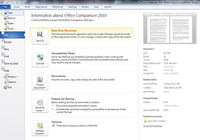
[Click on image for larger view.] |
| Figure 5. Microsoft Office Professional 2010 brings cloud functionality to the market leader. |
PowerPoint has been upgraded with a new browser version and the capability of editing video and images within PowerPoint with a basic video-editing tool. For still images such as JPEGs, Microsoft included a simple image-editing tool that now lets you more easily crop and select borders. I found these advancements more useful than the changes to video, as 95 percent of my presentations have still images.
Microsoft also gives users the ability to launch a live sharing feature with other users on SharePoint 2010. Essentially, you can now create a slideshow in PowerPoint and share it with other people in real time, as opposed to having to check it out in a read-only format.
Office 2010 also lets you upload your documents to a cloud environment and provides security so that you can determine who can view, edit or change your file. These features are universally applicable to Microsoft suites and not just limited to PowerPoint 2010, which is a nice plus.
The collaborative sharing works -- with PowerPoint, for example -- via an e-mail message that contains a link to your deck on the cloud. Once your recipients click the link, they'll see the slideshow version of your presentation within their browser. This feature also can be used on a mobile phone's browser, although for the purposes of data integrity and security, many enterprises may want to disable this capability.
It's important to note that the browser version of PowerPoint doesn't include the video-editing features, but most of the functionality you'd see in an older version of PowerPoint is included.
Just like PowerPoint, Excel spreadsheets can now run in the browser, and similar to PowerPoint, spreadsheets can be published to the browser via the desktop version of the software. Despite limited features on the browser version of Excel, we noticed that the functionality to create a detailed spreadsheet is still there.
Unlike PowerPoint, Excel was buggy and crashed a couple of times. I was puzzled as to why it would open for a second or two and then crash, until I got a pop-up telling me: "Excel experienced a serious problem with the 'send to Bluetooth' add-in." After disabling that add-in, the integrity of the spreadsheet program improved dramatically.
Another issue I had with Excel 2010 is that Microsoft still has not included the Data Analysis package as a default add-in when you open the program. This package provides incredibly useful tools that set Excel apart from its competitors, such as the ability to do fast correlative analysis or regression analysis to determine the relationship between one and multiple variables. Additionally, this package provides the ability to do quick descriptive statistics on a set of variables so that you can determine mean, median and range in a flash.
To bring up the Data Analysis package, you go to file, options, add-ins, select Data Analysis and click "Go." On the plus side, you don't have to reboot the software after installing an add-in, which was a common trait in previous versions of Excel.
The big change with Word is that Microsoft has updated the desktop version to offer a collaborative feature that allows multiple users to edit a document at the same time. On the desktop, Word notifies each user when there are changes that need to be synced with their document. I'd like to see this feature available in the Web version, as that would really put Microsoft ahead of its competition in the collaboration space.
The new version of Outlook 2010 now has a ribbon UI, like Word, PowerPoint and Excel. Likewise, viewing e-mail conversations has changed so that users have an easier time interpreting sent and incoming e-mails. But perhaps the most important change is the new ability to preview calendars in e-mails. One of my biggest pet peeves surrounding Outlook was the inability to see what my schedule looked like when I got mail. Now it's all there in the same window.
Microsoft has made Herculean strides in reinventing the office suite as a collaboration platform. The result is a well-honed piece of software worth the steep $500 price tag.
Pros: Cloud computing apps, real-time collaboration with SharePoint 2010, video editing
Cons: No upgrade capabilities, Excel crashes with desktop Bluetooth add-ins, data analytics package not default